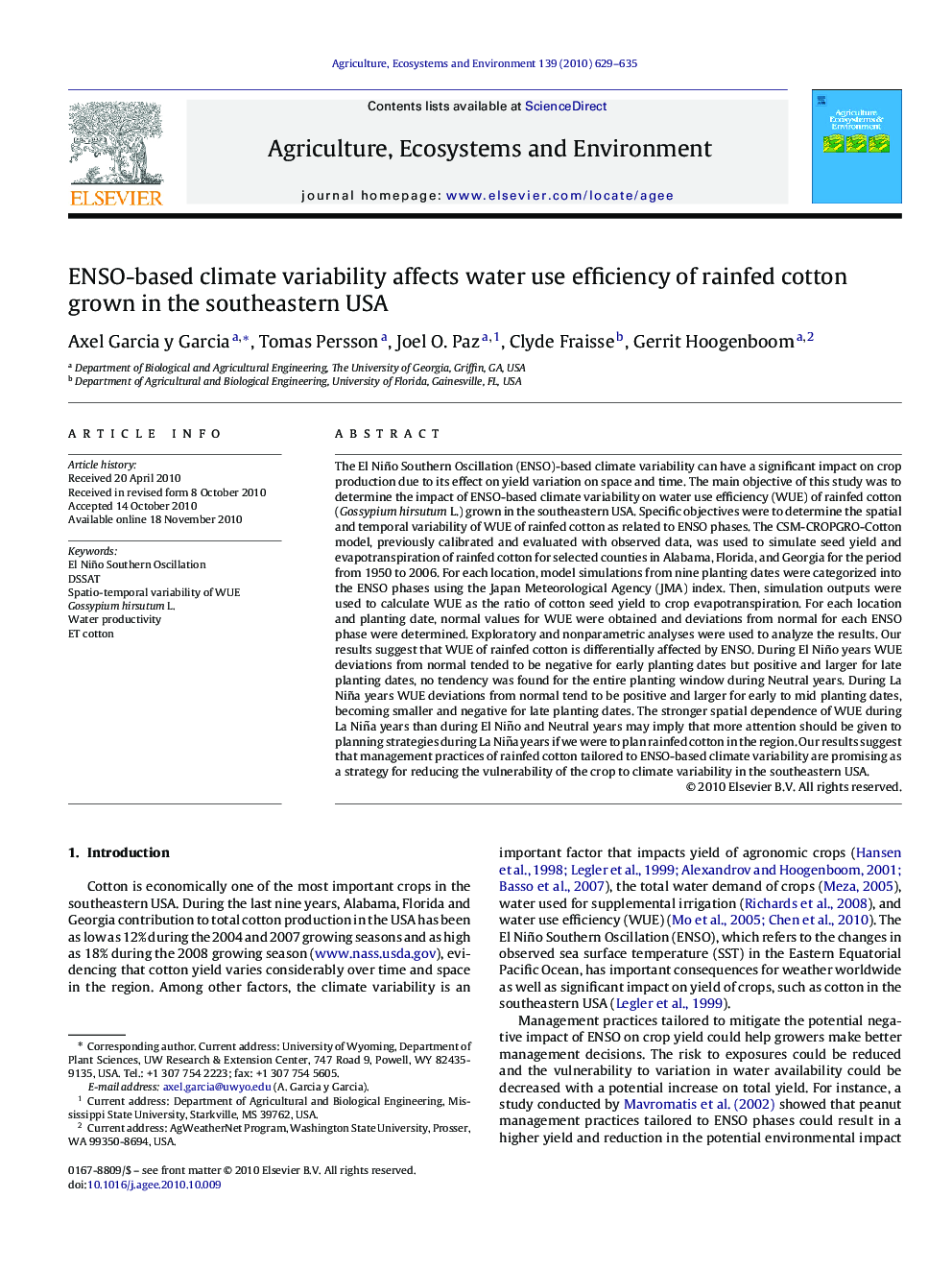| کد مقاله | کد نشریه | سال انتشار | مقاله انگلیسی | نسخه تمام متن |
|---|---|---|---|---|
| 10970574 | 1103936 | 2010 | 7 صفحه PDF | دانلود رایگان |
عنوان انگلیسی مقاله ISI
ENSO-based climate variability affects water use efficiency of rainfed cotton grown in the southeastern USA
دانلود مقاله + سفارش ترجمه
دانلود مقاله ISI انگلیسی
رایگان برای ایرانیان
کلمات کلیدی
موضوعات مرتبط
علوم زیستی و بیوفناوری
علوم کشاورزی و بیولوژیک
علوم زراعت و اصلاح نباتات
پیش نمایش صفحه اول مقاله

چکیده انگلیسی
The El Niño Southern Oscillation (ENSO)-based climate variability can have a significant impact on crop production due to its effect on yield variation on space and time. The main objective of this study was to determine the impact of ENSO-based climate variability on water use efficiency (WUE) of rainfed cotton (Gossypium hirsutum L.) grown in the southeastern USA. Specific objectives were to determine the spatial and temporal variability of WUE of rainfed cotton as related to ENSO phases. The CSM-CROPGRO-Cotton model, previously calibrated and evaluated with observed data, was used to simulate seed yield and evapotranspiration of rainfed cotton for selected counties in Alabama, Florida, and Georgia for the period from 1950 to 2006. For each location, model simulations from nine planting dates were categorized into the ENSO phases using the Japan Meteorological Agency (JMA) index. Then, simulation outputs were used to calculate WUE as the ratio of cotton seed yield to crop evapotranspiration. For each location and planting date, normal values for WUE were obtained and deviations from normal for each ENSO phase were determined. Exploratory and nonparametric analyses were used to analyze the results. Our results suggest that WUE of rainfed cotton is differentially affected by ENSO. During El Niño years WUE deviations from normal tended to be negative for early planting dates but positive and larger for late planting dates, no tendency was found for the entire planting window during Neutral years. During La Niña years WUE deviations from normal tend to be positive and larger for early to mid planting dates, becoming smaller and negative for late planting dates. The stronger spatial dependence of WUE during La Niña years than during El Niño and Neutral years may imply that more attention should be given to planning strategies during La Niña years if we were to plan rainfed cotton in the region. Our results suggest that management practices of rainfed cotton tailored to ENSO-based climate variability are promising as a strategy for reducing the vulnerability of the crop to climate variability in the southeastern USA.
ناشر
Database: Elsevier - ScienceDirect (ساینس دایرکت)
Journal: Agriculture, Ecosystems & Environment - Volume 139, Issue 4, 15 December 2010, Pages 629-635
Journal: Agriculture, Ecosystems & Environment - Volume 139, Issue 4, 15 December 2010, Pages 629-635
نویسندگان
Axel Garcia y Garcia, Tomas Persson, Joel O. Paz, Clyde Fraisse, Gerrit Hoogenboom,